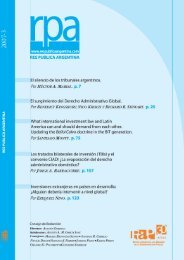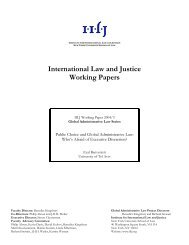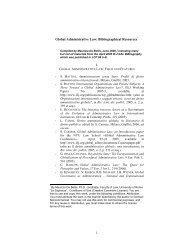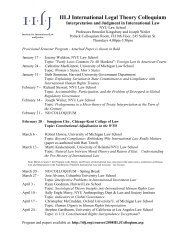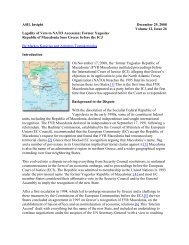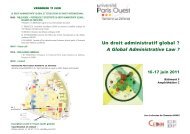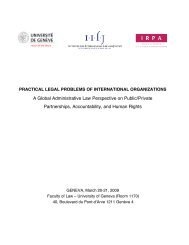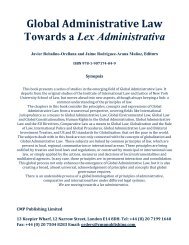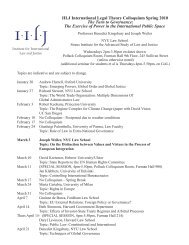brought under the dominican republic - central america - ita
brought under the dominican republic - central america - ita
brought under the dominican republic - central america - ita
You also want an ePaper? Increase the reach of your titles
YUMPU automatically turns print PDFs into web optimized ePapers that Google loves.
2.86. Accordingly, treating <strong>the</strong> relevant measure pleaded by <strong>the</strong> Claimant as an alleged<br />
practice constituting a one-off act <strong>under</strong> international law, <strong>the</strong> Tribunal could consider<br />
that <strong>the</strong> Parties‟ dispute arose in March 2008, at <strong>the</strong> earliest. On this analysis,<br />
<strong>the</strong>refore, <strong>the</strong> Tribunal would not consider that <strong>the</strong> relevant measure alleged by <strong>the</strong><br />
Claimant comprised one or more one-time acts completed before <strong>the</strong> Claimant‟s<br />
change of nationality on 13 December 2007. However, it is impossible for <strong>the</strong> Tribunal<br />
to characterise this alleged practice, necessarily comprising several acts and<br />
omissions, as a one-off act; and <strong>the</strong> Tribunal here declines to do so.<br />
2.87. Composite Act: As already described above, <strong>the</strong> Claimant pleaded its relevant measure<br />
as a composite act. The Tribunal considers that <strong>the</strong> existence of <strong>the</strong> de facto ban<br />
or practice, as alleged by <strong>the</strong> Claimant, necessarily extends both before and after <strong>the</strong><br />
Claimant‟s change of nationality in December 2007; and, <strong>the</strong>refore, <strong>the</strong> Tribunal is<br />
next required to analyse whe<strong>the</strong>r <strong>the</strong> alleged ban could be a composite act <strong>under</strong> international<br />
law. If <strong>the</strong> Tribunal were to determine that <strong>the</strong> ban was a composite act,<br />
only <strong>the</strong> component acts which occurred after <strong>the</strong> Claimant‟s change of nationality<br />
on 13 December 2007 could be treated by <strong>the</strong> Tribunal as possibly engaging <strong>the</strong> responsibility<br />
of <strong>the</strong> Respondent <strong>under</strong> CAFTA.<br />
2.88. As no relevant act was pleaded by <strong>the</strong> Claimant occurring after <strong>the</strong> change of nationality<br />
that could be a component part of <strong>the</strong> alleged practice only publicly disclosed in<br />
March 2008, it is impossible, in <strong>the</strong> Tribunal‟s view, to characterise <strong>the</strong> ban as a different<br />
legal animal from <strong>the</strong> several acts that comprise it, i.e. as a composite act.<br />
That ban was described by <strong>the</strong> Claimant as: “(t)he practice of <strong>the</strong> Government not to<br />
grant any metallic mining application” derived from <strong>the</strong> facts that <strong>the</strong> Government<br />
did not grant environmental permits to DOREX and did not grant a concession explo<strong>ita</strong>tion<br />
to PRES, which occurred before <strong>the</strong> Claimant‟s change of nationality in<br />
December 2007. These are similar acts <strong>the</strong> aggregation of which does not produce a<br />
different composite act <strong>under</strong> international law. The Tribunal <strong>the</strong>refore rejects <strong>the</strong> de<br />
facto ban, as pleaded by <strong>the</strong> Claimant, as a composite act.<br />
2.89. Continuous Act: Can <strong>the</strong> alleged practice be characterised as a continuous act, as<br />
also pleaded by <strong>the</strong> Claimant? If <strong>the</strong> Tribunal were to determine that <strong>the</strong>re was a<br />
Part 2 – Page 28



